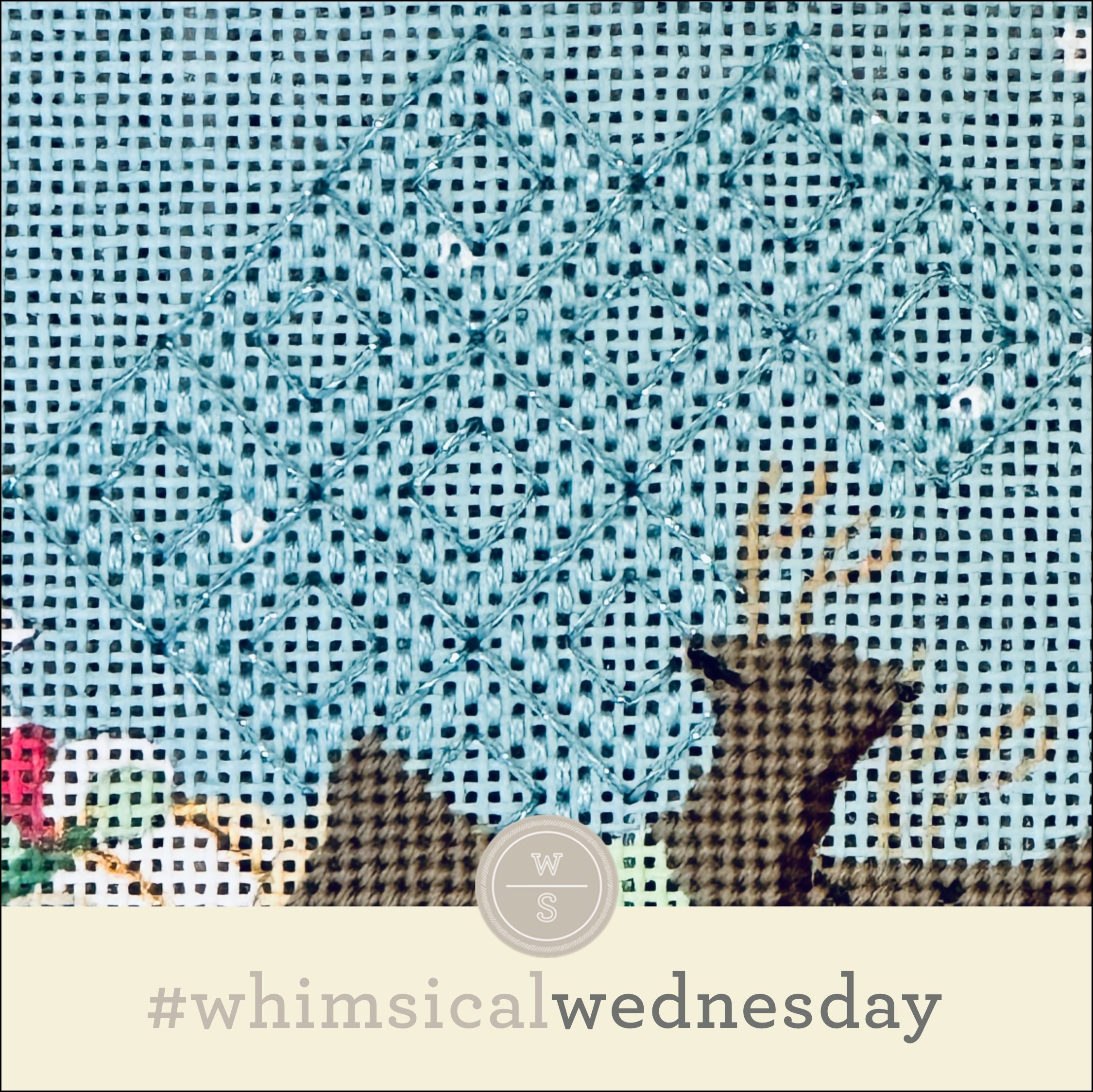I love diamond stitches. I stumbled across an interpretation of one of my favorite background stitches and decided to play with it some more.
A stitcher took the pattern from my favorite background stitch and separated the diamonds. I had one of those, “Darn. I wish I had thought of that.” (I may or may not have used the word darn.) I played with the idea by enlarging the diamond from five stitches on each side to six stitches on each side (black lines) and adding diamond borders (yellow lines) on both sides of the original diamond. I used two plies of Soie D'Alger for the black lines and Petite Silk Lame for the yellow lines. I absolutely love the end result.
Frankly, I loved every step of this stitch. Feel free to use one step (black lines), two steps (black lines with yellow lines creating the large surrounding diamond, or all three steps (all of the above plus the small diamond in the center of each diamond group).
I love this stitch for some elegant clothing, such as a coat with Vineyard Silk for the black lines and a size 8 Kreinik for the yellow lines. If I wanted to send it over the top, I would add a small bit of brick beading in the center diamond's center or a single Upright Tied Cross. It will make a fantastic background with Elegance for the black lines and a lightweight metallic (Treasure Braid, Petite Silk Lame, or size 8 or 4 Kreinik) for the yellow lines.
As you are auditioning stitches (from any stitch source), count the number of canvas threads on the diagram that match your mesh size. And there you have what an inch of the stitch will look like. Evaluate that against the area where you plan to use the stitch and make your final decision. If you start integrating this step into your stitch selection process, you may be surprised at how many stitches you think are large are much smaller than you realize.
By (sometimes) including this step in my own process, I find I am now integrating much longer stitches than I ever thought I would. I used to think a stitch six rows long was super big. I have very much changed my tune, which has helped me expand my creativity, especially for large-space stitches.
Today’s stitch diagram, along with all other #whimsicalwednesday and #smallspacesunday stitch diagrams, can also be found on a Pinterest board here. Be sure to follow whimsicalstitch.com on Facebook, Pinterest, Instagram, and Twitter.
If you like what you see on this blog, there's more. Mary’s Whimsical Stitches is a series of four books offering contemporary how-to collections of more than 200 stitches (in each volume) for all stitchers, regardless of skill level. All books include updated and sequenced diagrams from this blog, plus a collection of all-new stitches from private lessons and other class projects. Visit here to find a needlepoint retailer that carries my books.
New to needlepoint or looking for a refresher? Please download a handy how-to guide covering basic needlepoint stitches and stitch compensation techniques along with new top-line information on needlepoint materials and tools, how to handle threads, and other helpful needlepoint resources.
whimsicalstitch.com also sells Stitch Guides and Stitch Concepts for Melissa Shirley Designs, Zecca Designs, Sandra Gilmore, Purple Palm, Maggie, and Penny MacLeod, and many more. Click here to see the newest guides and click here to see the entire collection.
I hope you have the perfect spot for this stitch! Please enjoy! Have a wonderful #whimsicalwednesday!
A Note about Diagrams
I use color in diagrams to make them as clear as possible. The primary function of different colored lines is to illustrate a stitch sequence. For example, the layering of colors demonstrates you add them in that order. They can also provide ideas on integrating additional threads (one line for each color). Or, you can use the same thread for all color lines. That's where I encourage you to use your imagination for the space you are stitching!




